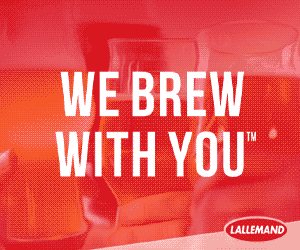Avoiding Off-Flavors

Beer flavor is an incredibly complex subject. Hops alone have over 500 flavor compounds, many of which go through complex transformations during brewing, fermentation, and aging. Add in hundreds of possible malts, waters, adjuncts, and yeasts, and the combinations of tastes and aromas become nearly endless.
Perception of beer flavor is equally complex. Through a combination of taste and smell, recent research indicates an average person is capable of discriminating as many as a trillion different flavors, and detecting many compounds in concentrations as small as a few parts per billion, according to a presentation given by beer author Stan Hieronymus. A handful of compounds such as skunky beer flavors can even be detected at parts per trillion.
RECIPE DESIGN FLAWS
In addition to the list of off-flavors that I’ll cover later, your beer can have a number of flaws that are related to recipe design and balance but are not technically considered off-flavors. Instead, these are balance, flavor, or ingredient choice issues better described as design flaws.
While I can’t cover the entire subject of recipe design flaws here, I will describe some of the most common recipe design issues an average brewer might run into.
MALT-HOP BALANCE: Malt provides the bulk of body and sweetness in beer, while hops obviously provide the bitterness. The correct balance between malt and hops is critical to beer. Obviously the hop-malt balance varies by style, as an IPA is much more bitter than an average Pilsner or English ale. You can use software and simple calculations like the bitterness ratio (IBUs/gravity points) to make sure your malt-hop balance is in the correct range for the style you
are brewing.
APPEARANCE (COLOR AND CLARITY): Obviously color and clarity should be appropriate to the style of beer. The color of the finished beer can be accurately estimated using software or the Morey equation (for more about the Morey equation, read “The Color of Beer” in the July-August 2017 issue). Finings and good technique can usually help you to improve the clarity of your beer.
CARBONATION: Achieving the correct level of carbonation for a given beer style is important. Carbonation drives the perception of both flavor and body. A flat or overcarbonated finish has the ability to ruin an otherwise excellent beer.
FLAVOR AND INGREDIENT SELECTION: You can brew a beer with no significant off-flavors or other flaws that simply has the wrong combination of ingredients or uses them in the wrong proportions. Common mistakes for many brewers include using too large a portion of specialty malts, muddling the beer with too many conflicting ingredients, using too much caramel or roasted malts, or simply choosing the wrong ingredients for a given style. When selecting ingredients I always emphasize the principle of simplicity. Make sure each ingredient you use has a specific purpose and use no more ingredients than are needed to achieve your goal.
TECHNIQUES: The techniques used in brewing a beer drive its flavor, body, and appearance. Using the right techniques in combination with the right recipe can improve your beer, but the opposite is also true.
These are just a sampling of concepts that come into play when designing a beer recipe that is appropriate for a given style or achieves a particular goal. In addition to the off-flavors and flaws I’ll cover in a moment, you also need to be able to evaluate and correct issues like those listed above to improve your beer.
OFF-FLAVORS
GRASSY: Grassy off-flavors may come across as a “fresh cut lawn” aroma, or it could be closer to wet leaves, wet hay, vegetal, or plant-like flavors. The flavor may vary in strength from a faint grassy aroma to a strong wet hay/leaf tint.
The most common cause of grassy off-flavors is from excessive dry hopping contact times. For example, it was once common to “keg hop” beer, leaving hops in the keg for weeks or months at a time. This can easily lead to grassy off-flavors. Now we know that peak dry hop flavor can be reached in as little as 24–72 hours, so most of us limit dry hop times to 3 days at most.
There are other potential causes as well. Hops or grains improperly stored in a humid area or that got wet in storage can lead to grassy flavors when you brew with them. In some cases, boiling hops for an excessively long time can also lead to grassy and vegetal off-flavors. Also, some hop varieties like Fuggle, Mosaic®, and Tradition are prone to grassy flavors.
To minimize grassy off-flavors, store your malts and hops in a cool dry place, and don’t use excessively long boil or dry hop times.
LIGHT STRUCK/SKUNKY: Light struck beer will have a strong skunky aroma and flavor and can be unpleasant to drink. Skunky beer happens when you expose your beer to light, especially direct sunlight.
Some compounds in a finished beer are photosensitive. In particular, isohumulones, which are the primary bittering compound in your hops, will transform when exposed to direct sunlight. All modern beers incorporate hops for bittering, so they are all susceptible to being light-struck.
When these bittering compounds are exposed to sunlight they transform into Methyl Butane Thiol (MBT). MBT is remarkably similar to the chemical composition of skunk spray and humans are extremely sensitive to it, and able to detect it in thresholds as low as parts per trillion. Even worse, the transformation can take place in minutes, especially if your beer is exposed to direct sunlight.
To prevent light-struck beer, you need to avoid exposing your beer to light. That’s why dark-colored bottles are used for most bottled beers. Store your beer in a dark, cool place and avoid clear or light-colored bottles, especially in situations like an outdoor picnic, where you would want to keep the beer covered in a cooler as long as possible before serving.
METALLIC: Metallic off-flavors most often taste like iron, copper, or blood. They can vary from subtle to very strong and unfortunately do not usually go away with time.
The cause of metallic off-flavors is, not surprisingly, metallic compounds in the beer. These off-flavors most often come from metal in contact with beer, as opposed to wort. Yeast cells mop up a lot of metal ions during fermentation. But when beer comes into contact with copper, iron, and brass, metallic off-flavors often follow. However, it can also come from contact earlier in the brewing process. For example, if you have a chipped porcelain coated kettle it will often expose and rust the iron underneath. Another common metallic off-flavor contributor is brass draft beer parts. Raw, brand new aluminum can also be a problem until it has been used to add the patina/oxidation layer on the pot. Stainless steel equipment is the best choice.
While it’s less common, you can also get metallic off-flavors from improperly treated/cleaned new equipment. For example, inexpensive stainless brewing equipment sometimes still has polishing compound and other solvents used in manufacturing on the surface when it arrives. You need to thoroughly clean and passivate new stainless equipment using a mild acid agent to remove the polishing compounds before using it the first time.
Even if you have good quality stainless equipment you need to be careful when storing it with other metals. When you put dissimilar metals in contact with each other it can break down the protective layer on the metals and lead to rust. This can even happen with stainless steel. For example, if you store some non-stainless steel tools in your stainless kettle it is possible for rusting to occur at the contact points.
Finally, it is possible to get metallic compounds introduced through your brewing water. While this is not common, some water sources such as wells that have a large metallic component may not be suitable for brewing.
MUSTY: Musty off-flavors have a musty or moldy component and can be quite unpleasant in a finished beer. The root cause is usually mold or mildew somewhere in the brewing process. This is most often introduced during fermentation when the beer is fermented or aged in a dirty refrigerator. If you have a fermentation fridge and use it to store foodstuffs, you can introduce mold/mildew in the fridge and run the risk of getting it into your beer.
Another common cause is improperly stored or old ingredients. If you store malt or hops in a moist environment or hops in a dirty fridge, or store them too long, you run the risk of moisture spoiling the ingredients leading to a musty finish in the beer.
You can also get mold from your serving system, especially if you have a keg with taps. Mold and mildew will develop in just about any keg tap and often the keg lines as well especially if you are not serving beer from it every day. Periodically cleaning out your keg lines and taps can minimize
this risk.
Lastly, it is possible to get a musty finish on your beer if it is oxidized (exposed to air). To avoid this, minimize your beer’s exposure to oxygen once fermentation has started, especially during transfers and storage.
SOLVENT: Solvent off-flavors come across as very strong, hot, spicy, paint thinner, nail polish remover, or wood polish taste and aromas.
The root cause for solvent off-flavors is out of control ester production. As mentioned earlier, ethyl acetate is the major ester produced by most yeasts and it provides a subtle pear flavor. However, ethyl acetate is also the active ingredient in things like glue, nail polish remover, and paint thinner. The difference between a subtle pear aroma and nail polish remover is simply a matter of how much ethyl acetate you have.
Fortunately it is pretty rare to get enough esters to create a significant solvent flavor. To prevent it you need to control ester production. This can be done by making sure you pitch enough yeast, aerate it properly, and controlling the fermentation temperature so the yeast is not fermenting at a high temperature.
SULFUR: Sulfur off-flavors will have the odor of a burnt match or rotten eggs. It is very common during fermentation of many lagers.
Sulfur odors are largely a byproduct of yeast selection. Some yeasts can produce levels as high as 290 mg/L of sulfur dioxide while others can be as low as 0.1 mg/L. Lager yeast in particular is well known for high sulfur production, so don’t panic if your lager smells like rotton eggs initially. Fortunately, sulfur is scrubbed out by CO2 during active fermentation, and also sulfur odors tend to fade with time and aging.
To reduce sulfur production it is important that you pitch enough yeast, keeping in mind that lagers often require twice as much yeast as a typical ale. Aerate your wort before pitching your yeast, fermenting at the recommended temperature, and also aging at the proper temperature are also important measures to take to keep sulfur flavors at a minimum. Cold crashing your beer can help accelerate the reduction in sulfur, but ultimately time will fix most sulfur issues in your beer.
VEGETAL: Vegetal off-flavors can taste or smell like cooked or canned vegetables, or in some cases rotten vegetables. It is distinctive from the cooked or creamed corn flavor that is associated with DMS.
Vegetal flavors, much like grassy flavors, most often come from hops that were either boiled or dry hopped excessively long. As with grassy flavors, some hop varieties are also more prone to creating vegetal flavors. For example, Hallertauer can sometimes produce a wet hay flavor, and SummitTM is known to produce a garlic finish. Harvest time and crop year both influence onion and garlic aromas in hops. You can also get vegetal off-flavors from using wet hops (freshly harvested hops that have not been dried).
YEASTY: Yeasty off-flavors create a bready, sulfur, and yeasty aroma and flavor. They are most often associated with young beers, though a few styles feature yeast as a flavor component.
Yeasty off-flavors come from yeast that either remains in suspension in the beer of from sediment at the bottom of bottles or kegs. In most cases time will allow the yeast to fall out of the beer in a process brewers refer to as flocculation. Your choice of yeast also drives this, as some yeast strains are known to fall rapidly out of the beer. We call these yeast high flocculation yeasts, while yeasts with low flocculation are slow to precipitate from the beer. Most yeast suppliers publish data showing whether a yeast strain is high or low flocculation, and you might want to consider this when selecting yeast.
You can significantly speed the flocculation of yeast through a combination of finings (clarity additives) and cold crashing. Many finings such as polyclar, isinglass, or silica are charged in such a way to bond with the yeast cells and accelerate flocculation. Cold temperatures also will speed flocculation, especially if you can get your beer close to (or slightly below) freezing. Yeast autolysis from beer left in contact with the yeast cake for months is another cause of yeasty off-flavors.
Certain styles such as hefeweizen include yeast as a central feature of the beer, and these are typically bottle conditioned so the yeast sediment remains in the bottle and can be swirled back into suspension before serving.
CONCLUSION
Understanding basic recipe design concepts and off-flavors are key skills to have as you travel down the path to become a better brewer. There are two points I want to emphasize at the conclusion as these are the key to making better beer.
First, I want to urge you to become a better beer evaluator. You don’t have to enter competitions or study for the BJCP judge’s test to do this. Merely take advantage of every opportunity to critically evaluate both your beers and other beers you taste. Also, whenever possible, sample beers with more experienced brewers and beer judges and discuss their opinion of a given beer. Often they will pick up flaws and flavors you have missed. Only by doing this will you be in a proper position to evaluate your own beers critically to identify and improve them.
Second, I urge you to brew your beer recipes more than once. Early on I had a habit of brewing as many beer styles as I could, rarely if ever brewing a beer a second time. However, in brewing a recipe only once, my beers never improved. I never critically evaluated the beer, identified potential improvements, and then made the changes to make better beer. Only by iterating and perfecting a recipe can you master flaws and off-flavors to truly become a better brewer.
Judging off-flavors
ACETALDEHYDE – A green-apple aroma and flavor.
ALCOHOLIC – Heavy alcohol aroma and flavor, sometimes described as hot.
ASTRINGENT – Grainy, husky, dry bitter flavor (sucking on a tea bag).
DIACETYL – Buttery, butterscotch, buttered popcorn, or toffee aroma.
DMS (DIMETHYL SULFIDE) – Cooked corn, creamed corn flavor and aroma.
ESTERY – Fruity, fruit flavoring, pears, or roses.
GRASSY – Fresh cut green leaves or a freshly mowed lawn.
SKUNKY/LIGHT-STRUCK – The aroma of a skunk.
METALLIC – Can be copper, iron, tinny, or a blood-like flavor.
MUSTY – Moldy, stale, or musty aroma and flavor.
OXIDIZED – Cardboard, paper, Sherry, stale, or wine flavors.
PHENOLIC – Spicy, smoky, plastic, or even medicinal Band-Aid flavors.
SOLVENT – Lacquer thinner, paint thinner, higher alcohol aromas.
SOUR/ACIDIC – Tart, sour, can be clean lactic flavor to vinegar-like.
SULFUR – The aroma of rotten eggs or burning matches.
VEGETAL – Cooked, canned, or rotten vegetables.
YEASTY – Bready, sulfury, or yeast-like aroma and flavor.
The first critical step in troubleshooting your own beer is being able to correctly judge and identify the off-flavors or flaws in your beer. The Beer Judge Certification Program (BJCP) (at www.bjcp.org) publishes a one-page beer judging score sheet that provides an excellent guide for evaluating any beer. Even if you are not into competitive brewing, I recommend you print out the score sheet and use it to critically evaluate your own beer. If you are not an experienced beer judge, you may want to enlist the help of some fellow brewers or friends to get their opinion on your beer as well.
As a brewer, you should make it a goal to constantly improve your beer judging skills as it can take years to be able to correctly identify and isolate certain flavors. When I sample a new beer, even a commercial one, I try to mentally take a minute up front to critically evaluate the beer and identify what is good and bad about it. This helps me to improve the beer judging skills needed to improve my own brews.



